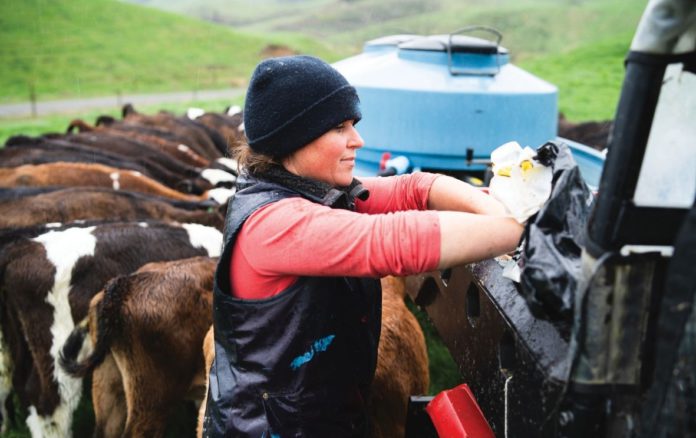In this article, Evelyn Drake looks at agricultural labour shortages in terms of current options and long-term solutions.
For several years, the labour shortage on farms has been a familiar and unwelcome issue during the busy spring period.
Spurred on by post-quota expansion and with a lack of adequate foresight and planning across the industry, that trend has remained unchanged this year within the dairy sector.
However, labour shortages are now being observed across other areas of the agricultural industry, with horticulture, poultry, and the pig industry particularly affected. So what are the current, proposed, and possible future solutions?
Current challenges
Teagasc has previously identified four main challenges farmers face when sourcing suitable labour. Poor working environments – facilities, poor management, and lack of training, present a significant barrier.
Additionally, the often seasonality and workload demand may be considered off-putting. In addition, a poor perception of the industry as a whole categorised by long hours and low wages currently exists.
Finally, finding staff with the required appropriate skills is becoming exceedingly more difficult.
Within the pig meat industry, the shortage of labour has been described as being at a critical level.
In a recent press release, IFA Pigs Chairman Roy Gallies, called upon the Department of Trade, Enterprise and Employment (DTEE) to fast track work permits (currently up to six months to process) for skilled employees based outside of the European Economic Area (EEA) as a possible short term solution.
Agricultural labour sources
In January, Seamus Rowe of Farm Solutions, providers of labour management services to Irish farmers, highlighted the ongoing issue on social media.
Rowe noted that despite a slight let-up in labour shortage last year (due to work/study from home conditions resulting from the COVID 19 pandemic), a deficit still exists between demand and supply of workers within the industry.
Mr. Rowe also described the success of a 2018 pilot scheme for dairy assistant permits, which could be re-introduced, and has also contacted DTEE with his recommendations.
Farm Solutions currently has several country-wide farm operator roles open and encourages those with farm experience to apply.
Farm Relief Services (FRS), a farmer-owned cooperative, established in the eighties, currently have a country-wide network of skilled farm operators.
Initially established to connect farmers and skilled operators, the organisation is facing the same ongoing issues. They are currently advertising for a range of open, part-time, and full-time positions nationwide via their website.
LKL Ireland, a collaboration between Grasstec Group and UK-based LKL Services Ltd, is offering a new recruitment service to Irish farmers and is attempting to meet labour demand with Eastern European sourced skilled labourers.
LKL Services Ltd brings years of experience in farm labour recruitment for farmers in the UK.
They currently have several competent and experienced farm workers advertised as available for work. More information regarding this service is available via their website.
Automation
Besides, externally sourced labour, some other potential options exist. Automation of farming activities can reduce labour requirements during spring calving.
Currently, the processes of milking, calf feeding, TMR feeding, feed pushing, manure scraping, and grass allocation can be automated to different degrees.
Within the horticultural industry, devices such as automatic planters, harvesters, and irrigators exist to relieve the dependence on manual labour.
The pig industry also benefits from the automation of processes, including feeding and weighing. However, cost, installation time, and long COVID 19 related lead times must be factored into consideration.
Therefore, the potential high costs associated with automation, may a longer-term solution if the current industry situation does not improve.
Lean farming
The Lean approach (based on the Toyota Production System) from the car manufacturing industry has found its way to the agricultural sector via Lean Farming.
Lean farming involves optimizing, streamlining, and improving current farm processes to utilise less time and resources, resulting in greater overall returns.
Dairygold Cooperative, amongst others, implemented a pilot programme, Leanfarm, on-farm in 2017, which according to their website, resulted in:
- Improved farm safety;
- Quality;
- Resource efficiency;
- Time-saving;
- Reduced stress and manual labour.
A more comprehensive industry-wide role out has the potential to assist in reducing labour demands.
Training and co-operation
Funded or partially funded training schemes for homegrown sourced skilled farm labourers have the potential to help alleviate the shortage.
Introducing industry-wide standards for employment, including hours of operation and working conditions, would need to be considered to encourage people into the industry as a long-term career option.
Sharing a labour unit between farmers could ease the burden of one farmer paying a full wage for skilled labour for the entire year.
Likewise, cross-industry employee sharing schemes may also address the seasonal and long-term employment insecurity for skilled workers.
Industry outlook
Uncertainty still exists for the future. However, it is safe to say that if changes such as those mentioned are not implemented, the industry will likely face the same labour shortages in spring 2023 and beyond.





